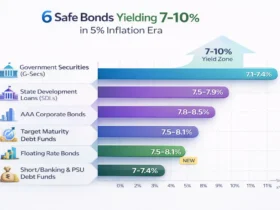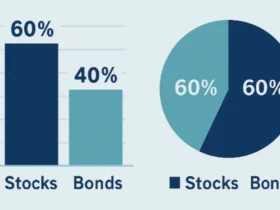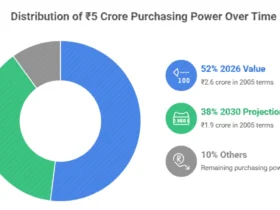Introduction: Turning Small Savings into Big Security
You set aside ₹2 lakh today, and without lifting a finger, it quietly grows into ₹2.90 lakh over a fixed period. No market risks, no sleepless nights tracking stock prices, and no complicated paperwork. Sounds like a dream? For millions of Indians, this dream is made possible by the Post Office Fixed Deposit (FD) Scheme.
Table of Contents
At a time when stock markets are volatile and gold prices keep swinging, people are returning to tried-and-tested instruments that blend safety with decent returns. One such hidden gem is the Post Office FD, which is not just a savings product—it’s a government-backed promise of growth.
In this blog, we’ll explore in detail how investing ₹2 lakh in a Post Office FD can mature into ₹2.90 lakh, its benefits, interest rates, real-life examples, expert opinions, and how it compares with bank FDs and other instruments.
What Is the Post Office FD Scheme?
The Post Office Fixed Deposit Scheme, also known as the National Savings Time Deposit Account, is one of the most trusted savings schemes in India. It is operated by India Post and fully backed by the Government of India, making it one of the safest investment avenues.
Key highlights:
- Tenure options: 1 year, 2 years, 3 years, and 5 years
- Minimum investment: ₹1,000 (no maximum limit)
- Interest rates: 6.9% to 7.5% (as of 2025) depending on tenure
- Guaranteed returns (no market risk)
- Eligible for tax benefits under Section 80C (for 5-year FD only)
The star feature here is the 5-year FD, where your investment not only grows steadily but also qualifies for tax deductions.

How Does ₹2 Lakh Become ₹2.90 Lakh?
Let’s break it down with actual numbers. Suppose you invest ₹2 lakh in a 5-year Post Office FD at 7.5% interest (compounded quarterly).
Calculation Table
| Investment Amount | Tenure | Interest Rate (p.a.) | Maturity Amount | Total Gain |
|---|---|---|---|---|
| ₹2,00,000 | 5 Years | 7.5% (compounded quarterly) | ₹2,90,000 approx. | ₹90,000+ |
This growth is possible because of quarterly compounding, where interest is added to the principal every three months, allowing your money to grow faster than simple annual compounding.
Why Choose Post Office FD Over Bank FD?
Bank FDs are popular, but Post Office FDs often offer slightly higher interest rates and government backing. Let’s compare:
Comparison Table: Post Office FD vs Bank FD
| Feature | Post Office FD | Bank FD |
|---|---|---|
| Interest Rate | 7.5% (5 years) | 6–7% (varies by bank) |
| Safety | Government-backed | Depends on bank stability (up to ₹5 lakh insured by DICGC) |
| Minimum Investment | ₹1,000 | ₹5,000–₹10,000 (varies) |
| Tax Benefits | Yes (5-year FD under 80C) | Yes (5-year FD under 80C) |
| Compounding | Quarterly | Quarterly/Monthly (depends) |
For conservative investors seeking assured growth with no risks, Post Office FD is often the better bet.
Real-Life Example: Sunita’s Smart Investment
Meet Sunita Sharma, a 38-year-old school teacher from Lucknow. In 2020, she invested ₹2 lakh in a Post Office 5-year FD. While her friends opted for equities, Sunita preferred guaranteed growth.
- Investment: ₹2 lakh
- Tenure: 5 years
- Rate: 7.4% (then prevailing rate)
- Maturity (2025): ₹2.88 lakh
Her friends saw ups and downs in the stock market, but Sunita enjoyed steady, worry-free growth. This real-life case highlights why risk-averse individuals and retirees often choose Post Office FD schemes.
Expert Insights: What Financial Advisors Say
To make this analysis richer, let’s see what experts think:
Ramesh Gupta, Certified Financial Planner (CFP):
“Post Office FDs are a safe haven for conservative investors. While they may not beat inflation massively, the stability they provide is unmatched, especially for those nearing retirement.”
Anjali Mehra, Economist:
“In uncertain times, guaranteed return schemes like Post Office FD create a balance in a portfolio. Pairing them with equities ensures safety plus growth.”
Benefits of Post Office FD Scheme
Here’s why millions prefer this scheme:
- Government-backed safety – Zero default risk
- Decent interest rates – Higher than some bank FDs
- Quarterly compounding – Maximizes growth
- Flexibility – Multiple tenures (1–5 years)
- Tax benefits – 5-year FD eligible under Section 80C
- Easy accessibility – Available at 1.5 lakh+ post offices across India
Drawbacks to Consider
No investment is perfect. Be mindful of:
- Interest is taxable (unless invested in 5-year FD for Section 80C deduction)
- Premature withdrawal penalty applies
- Inflation-adjusted returns may be lower than equities
- No online investment option in all post offices (still catching up digitally)
Post Office FD vs Other Popular Investments
| Investment Option | Average Returns | Risk Level | Liquidity | Tax Benefits |
|---|---|---|---|---|
| Post Office FD | 7–7.5% | Very Low | Moderate (lock-in) | Yes (5-year FD) |
| Bank FD | 6–7% | Low | Moderate | Yes (5-year FD) |
| PPF | 7.1% | Very Low | Low (15 years lock-in) | Yes (80C + tax-free interest) |
| Mutual Funds | 12–15% (long term) | High | High | Yes (ELSS under 80C) |
| Gold | 8–10% | Medium | High | No direct benefits |
Verdict: For safety-first investors, Post Office FD is unbeatable. But for wealth creation, it works best alongside equities or mutual funds.
Case Study: Building Wealth Step by Step
If you invest ₹2 lakh every 5 years in Post Office FDs, here’s how your wealth grows:
| Year | Investment | Maturity Value (7.5% FD) |
|---|---|---|
| 2025 | ₹2,00,000 | ₹2.90 lakh |
| 2030 | ₹2,00,000 | ₹2.90 lakh |
| 2035 | ₹2,00,000 | ₹2.90 lakh |
By 15 years, your ₹6 lakh investment can grow into ₹8.70 lakh (excluding reinvestment benefits).
Step-by-Step: How to Open a Post Office FD
- Visit your nearest post office.
- Fill out Form A (FD application form).
- Provide KYC documents – Aadhaar, PAN, and address proof.
- Deposit the amount (cash, cheque, or transfer).
- Receive your FD certificate/passbook.
Latest Interest Rates
| Tenure | Interest Rate (p.a.) |
|---|---|
| 1 year | 6.9% |
| 2 years | 7.0% |
| 3 years | 7.1% |
| 5 years | 7.5% |
(Rates revised quarterly by the Ministry of Finance)
Tax Implications
- Tax Saving: 5-year FD qualifies for Section 80C deduction (up to ₹1.5 lakh).
- Tax on Interest: Returns are fully taxable as per your slab rate.
- TDS: No TDS is deducted by post office, but you must declare income.

Smart Tips to Maximize Returns
- Opt for 5-year FD for higher rates + tax benefits
- Align investments with financial goals (child’s education, retirement)
- Diversify – Don’t put all money in FDs, mix with equities/mutual funds
- Reinvest maturity into fresh FD if you want compounding over decades
Frequently Asked Questions
1. How safe is the Post Office FD scheme?
Extremely safe. It is fully backed by the Government of India.
2. Can I withdraw my FD before maturity?
Yes, but penalties apply. You can withdraw after 6 months with reduced interest.
3. Is the interest earned tax-free?
No, interest is taxable. Only the principal invested in a 5-year FD qualifies under Section 80C.
4. Which is better: Post Office FD or Bank FD?
Post Office FD generally offers slightly higher rates and full government security.
5. Can NRIs invest in Post Office FDs?
No, only resident Indians are eligible.
6. Is online opening available?
Some post offices support online FD opening via India Post Payments Bank (IPPB), but availability varies.
Conclusion: A Safe Path to Financial Security
If you’re someone who values safety, simplicity, and assured returns, investing in the Post Office FD Scheme is a smart move. Your ₹2 lakh investment can grow into ₹2.90 lakh in just 5 years, backed by the Government of India’s guarantee.
While it may not deliver the explosive growth of mutual funds or stocks, it offers peace of mind, which is priceless in uncertain times.
Action Step: Visit your nearest post office today, open a 5-year FD, and secure your financial future. Start small, stay consistent, and watch your money grow—safely.
Pro Tip: Use Post Office FD as the foundation of your portfolio and balance it with mutual funds or equities for long-term wealth creation.





























Leave a Reply